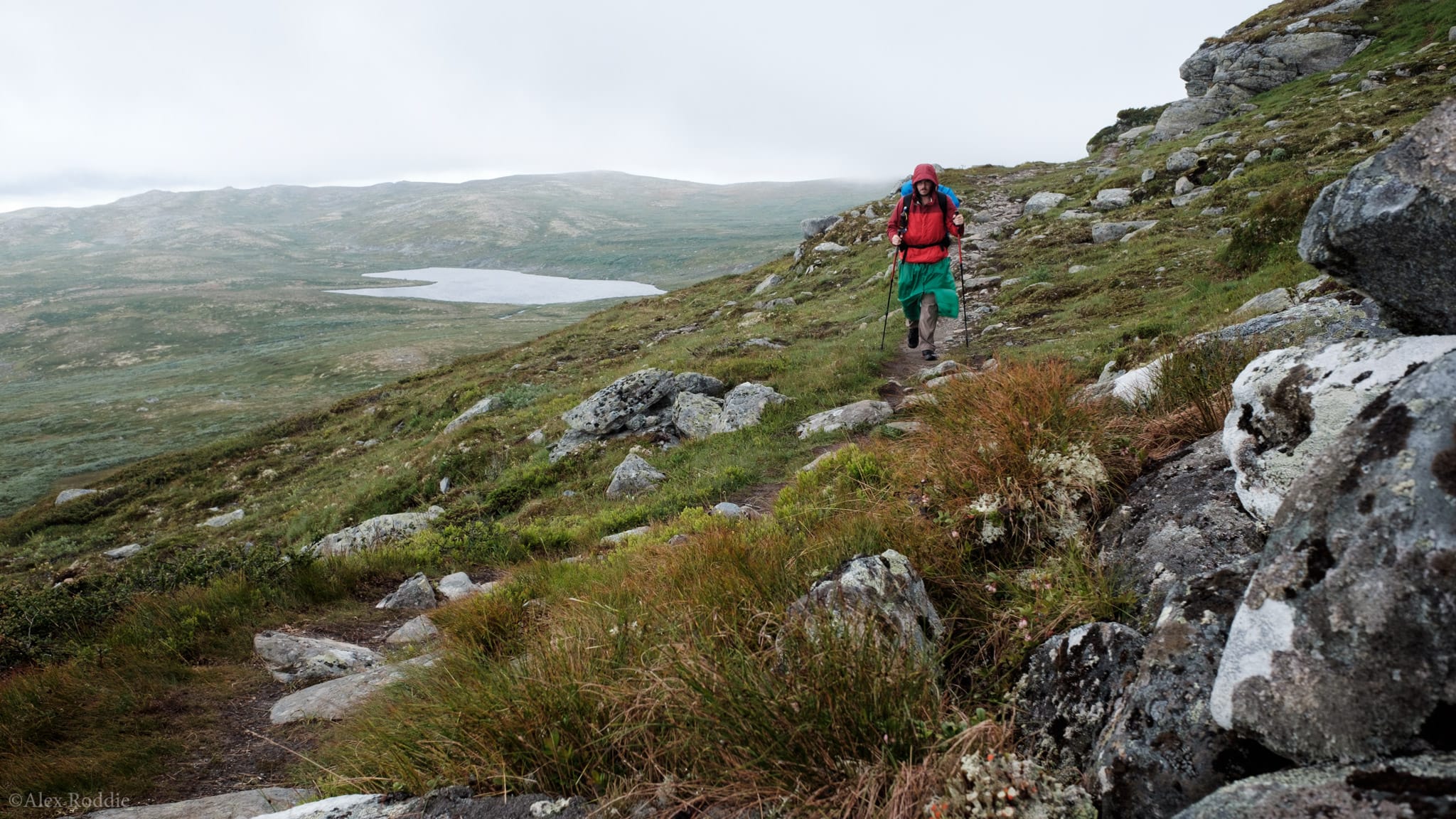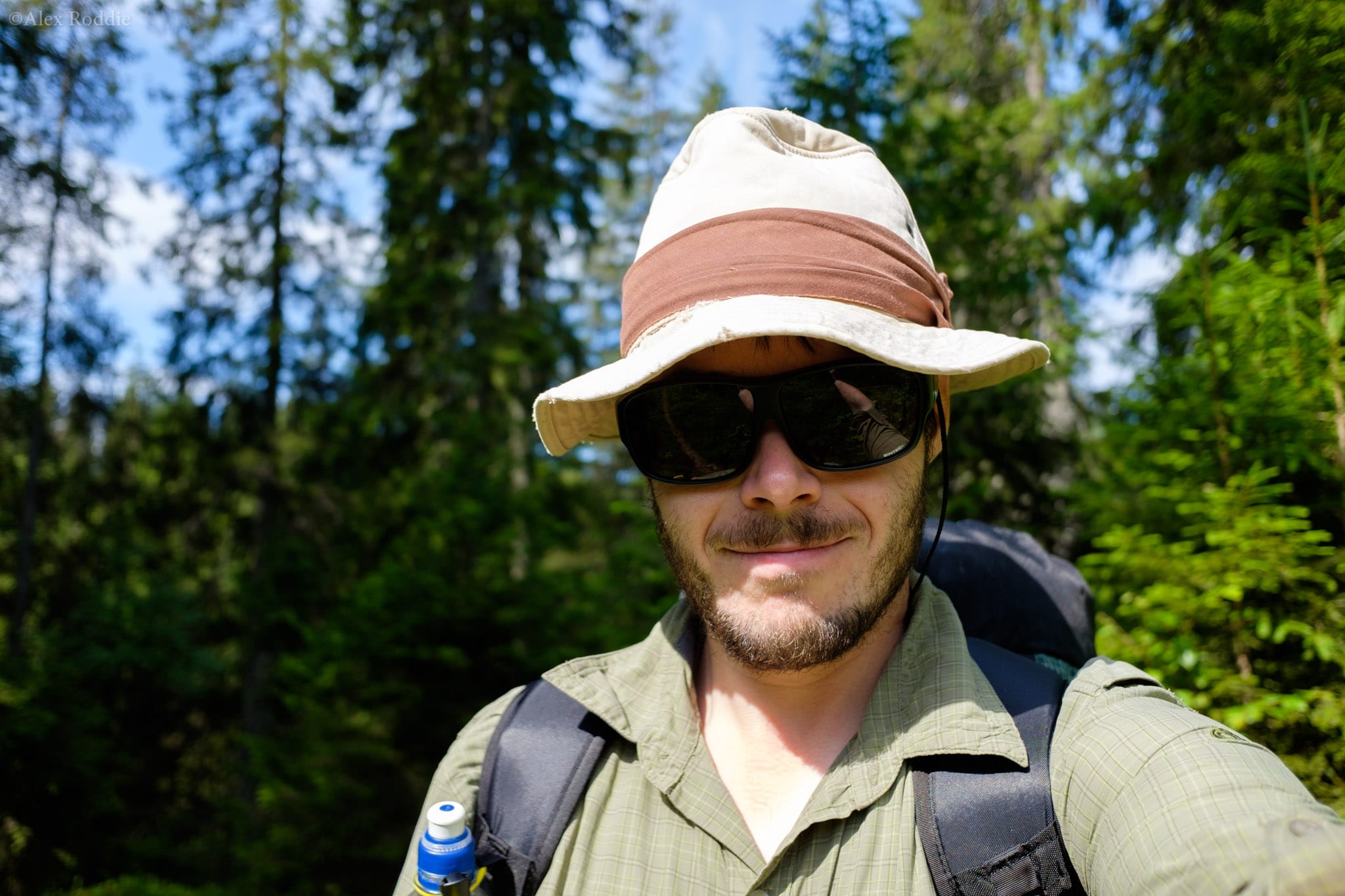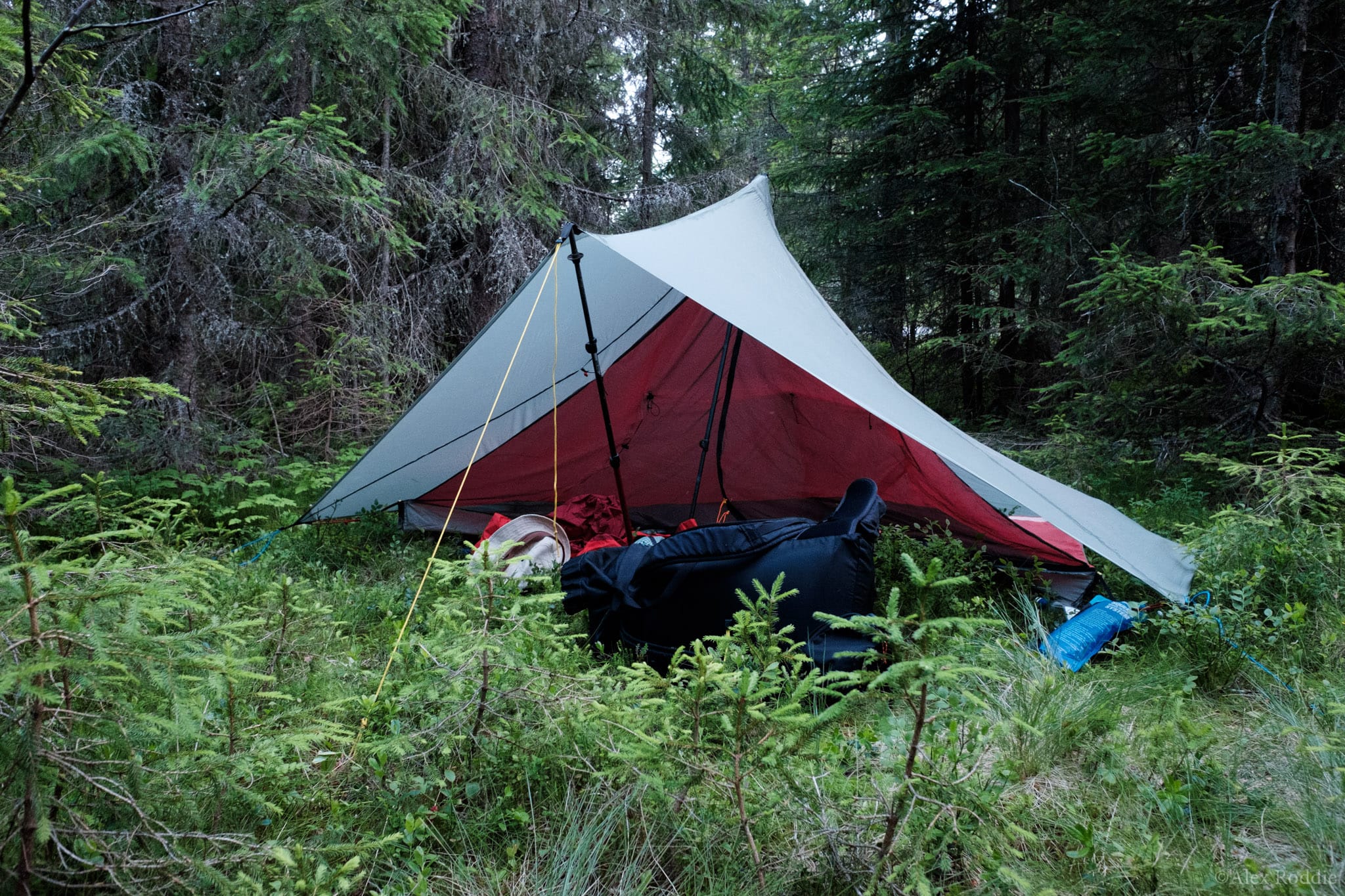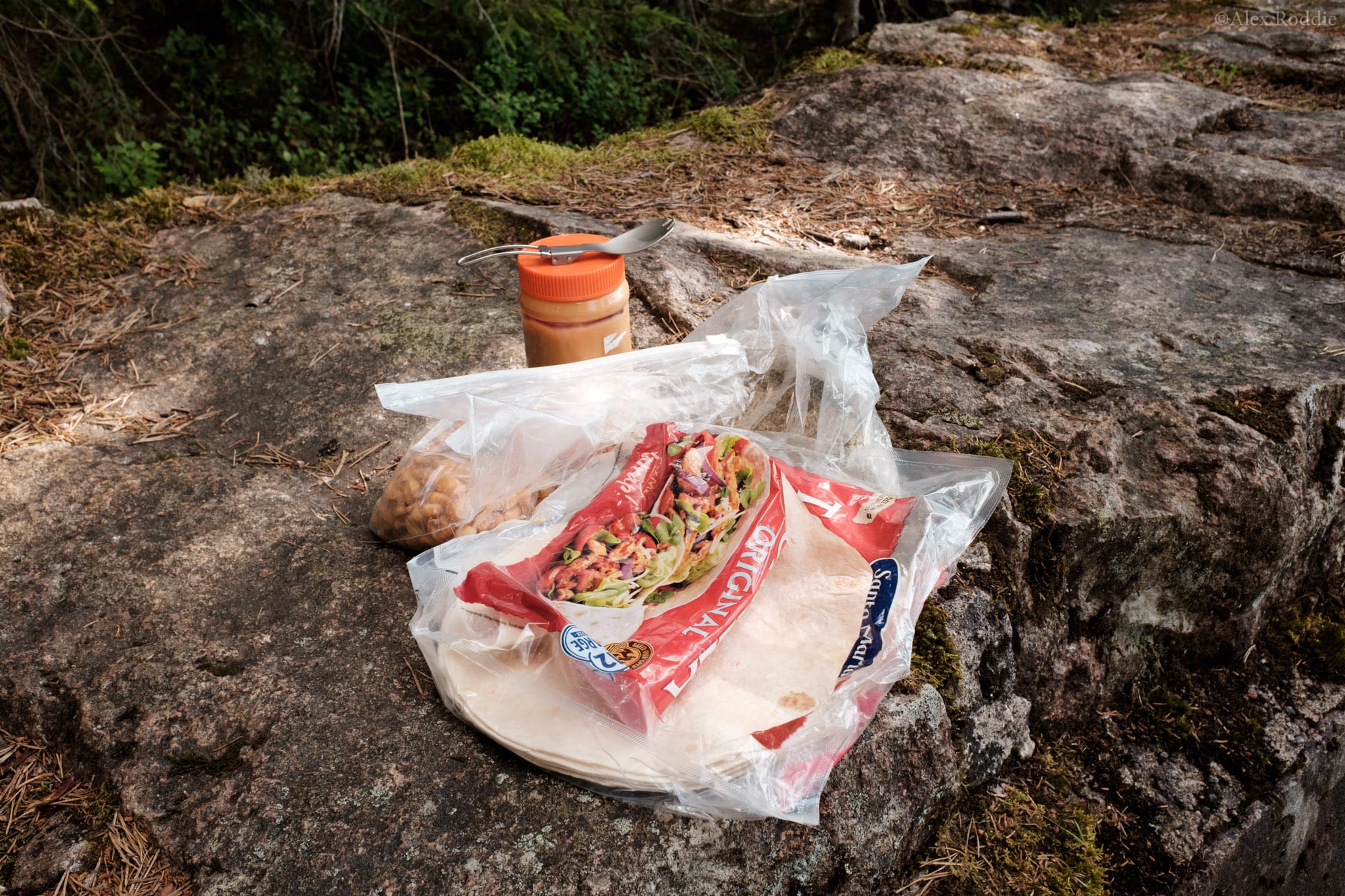The ultralight experiment of 2017

This year, for the first time, I have completed a long-distance hike with an ultralight pack. Here’s how I did it, and why for me it’s only one tool in the toolbox, not the only way to enjoy the wild.
I started cutting pack weight in 2014. Before that point, I’d suffered badly from blisters whenever I attempted to hike through the mountains for more than a day or two, and the weight of my load was a serious handicap. In 2013 I crossed the Cairngorms via the classic Glen Tilt and Lairig Ghru route, and while I had a good time it also felt like much harder work than it should have been. My first clumsy attempt to cut pack weight, on an Alpine trip the next summer, saw me ditch several items yet still carry B3 winter boots, ice axe and full crampons on a route that didn’t require them.
It all started to change for me when I completed my Cape Wrath Trail in June 2015. That was a hard trip, but without shedding kilos from my pack I have no doubt I’d have given up after Knoydart. I had tasted success and I knew that, for me, a lighter pack was the key to greater enjoyment on the trail and the hill.
But how light did I need to go?
The 8-8.5kg plateau
My CWT gear list came to a base weight1 of roughly 8.9kg, which certainly did not feel too heavy yet it was not a particularly efficient load. I ended up carrying two pairs of trail shoes, because I was worried my first pair would wear out. I carried two sleeping mats because I was worried the inflatable one would spring a leak. I took unnecessary items for the objective such as gaiters, waterproof socks, a map roamer and a comprehensive repair kit. Other items were poor choices, such as a crummy digital compact camera selected instead of my DSLR because it was lighter.
The Cape Wrath Trail taught me that any idiot can cut weight from their pack – that, in fact, weight itself does not really matter beyond a certain point. The real challenge is to learn more about yourself and what you actually need.
Later that year, I hit just below 8.5kg for my Tour of Monte Rosa. This felt like a radical move at the time. I hiked with no stove to save weight, no fleece mid-layer, and only carried paper maps as vestigial backups. However, I thought I needed ‘camp shoes’ so ended up carrying almost 500g in sandals that I hardly wore.
I made various tweaks to the same basic kit list for the next few trips. I hiked the West Highland Way and Skye Trail with an 8.5kg base weight, adding another 900g of winter kit for the Alder Trail. My Haute Route Pyrenees section hike saw me dip down to 8.2kg, but these were all variations on the same theme.

I learned more about what I actually needed to be safe and comfortable. And although 8-8.5kg never felt heavy on my back, I was curious what would happen if I completed a trail with an ultralight load.
Pushing below 6kg
For my Jotunheimstien thru-hike in July 2017, I made radical changes to my gear load and achieved a base weight of 5.2kg. Here’s how I did it:
- Changed shelters. Out with the Trailstar for this trip, in with the MLD Cricket at a sprightly 785g including full inner nest.
- Changed packs. I used the ÜLA CDT, half the weight of my old favourite the Circuit.
- Removed lots of ‘just in case’ items, including insulated clothing, waterproof trousers (I used a rain kilt instead), baseplate compass (a button compass was more than adequate on this trail) and loads of other small bits and pieces.
- Ruthlessly cut back on the amount of camera gear I carried. Instead of a mirrorless interchangeable-lens camera and several lenses in a big camera bag, I just took a compact camera in my pocket (but one with much better image quality than the compact I took on the CWT).
Day to day, hiking with such a minimal load made no appreciable difference at first, but over time I noticed I had more energy at the end of each day. And because I had less to pack up in the mornings and fewer camp chores to do in the evenings, I found myself walking for longer, spending less time in camp. Gradually, my mileage increased.

For a while now, my average daily mileage on a long-distance trail has been roughly 13-14 miles, never really going above 18. But on this trip I found myself averaging over 20 miles a day. On one day I did 26 and felt fine at the end of it, as if I could keep going for another 10. There were other factors involved – I’m a bit fitter this year, and the total daily ascent on the Jotunheimstien wasn’t great, for example – but I have no doubt that shedding several kilos directly led to my increased mileage.
The question is, what price did I pay to achieve that, and is it how I want to spend my time on trail?
Finding the right balance
Every backpacker has a different comfort threshold. Some people wouldn’t consider spending time in the wild without hot food and an inflatable sleeping mat, while others will happily sleep on cold ground without any kind of pad or mat at all. The reason these subjects get debated so often is because there is no right or wrong answer when it comes to backpacking technique; everyone’s different.
On the Jotunheimstien I learned that it can feel really good to increase my daily mileage, but at the same time it can feel like I’m rushing and not taking enough time to appreciate where I am.
Here are the compromises I made on the Jotunheimstien for the 5.2kg pack experiment:
- While my compact camera and mini tripod setup was quite capable of taking great images, I sacrificed much of the flexibility that comes with my full camera setup. I couldn’t take superwide, normal or telephoto shots, and my tiny tripod severely limited the self-portraits I could take.
- Although I’m pretty much fine with going stoveless at this point, I must admit I got a little bit bored of trail mix and Kornmo biscuits towards the end of the trip.
- While my rain kilt was a surprisingly good replacement for waterproof trousers in the light rain I encountered, it did make me more wary of the weather when heading above treeline in the latter part of the trail. I knew that in genuinely diabolical weather my margin for error would be reduced.
- My ultralight frameless pack was not as comfortable as my old favourite the Circuit, and the hip belt did very little to transfer the load.
Compared with my standard 8-9kg load, which I now regard as ‘full comfort’, I think I made surprisingly few compromises to shave off so much weight, but at the same time the rewards were also comparatively minor. Yes I added a few miles to my daily average distance hiked, and yes I felt a bit less tired at the end of every day, but what does that mean in real terms? For me, with the kind of trips I do, very little.

It was a worthwhile experiment. I don’t think I would be happy going beneath 5kg regardless of objective; that’s valuable to know. I also learned a bit more about areas where I can safely stretch my comfort limit if required. But ultimately, there is absolutely no point in packing to an arbitrarily low weight limit just for the sake of it; for me, I don’t think there’s ever any genuine need to carry less than 8kg. That’s my sweet spot.
Ultralight is a tool in my toolkit and an extension of the skills I’ve been building up for years. If the time comes again when I need to radically cut weight (say, a trip to a desert region where I’ll need to carry huge amounts of water, or long-distance over the Alps), then I will do so. But for trips I know will be well within my capabilities, I’d rather carry a bit more camera gear and know that I’ll get the shot, or maybe better clothing to reduce stresses about the weather. And I’d rather carry it all in a pack that can comfortably carry the weight.
Hike your own hike, they say. If you want to apply the ultralight philosophy to every trip you go on, if doing the big miles is what makes you feel alive, then more power to you – there’s something conceptually beautiful about ultralight backpacking. But at the same time, don’t feel you have to be an ultralighter just because it’s what all the cool bloggers and Youtubers seem to be doing.
And besides, the spirit of ultralight is about finding your true needs and striving for greater efficiency, not just about having the lightest pack.
- Base weight is usually regarded as the total weight of all the kit you’re carrying, minus consumables such as food and water. Base weight also doesn’t usually include clothing worn or items such as shoes or trekking poles. Some people prefer the more complete ‘skin-out weight’ (the total weight of everything), but I find it convenient to think in terms of base weight – it’s just what makes sense to me. ↩
Alex Roddie Newsletter
Join the newsletter to receive the latest updates in your inbox.




